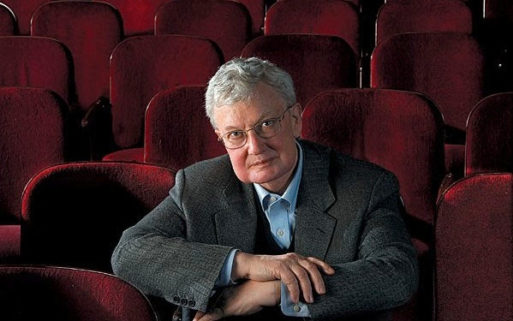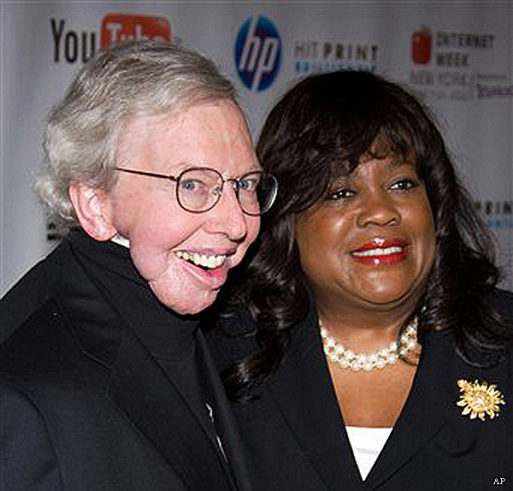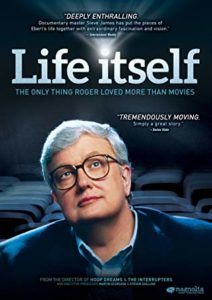
Credit: indiewire.com
Just about anyone who owned a television during the 1980s and ‘90s knew Gene Siskel and Roger Ebert. The duo sat on the stage of the iconic TV shows,” Sneak Previews” and “At the Movies,” and gave America on-camera reviews of some of the best and worst that Hollywood had to offer for 13 years. Often differing, sometimes bickering, and occasionally flat out arguing, the two ultimately signaled their approval or disapproval with a now famous “thumbs up” or “thumbs down.”
Siskel and Ebert were arch enemies when they started the show. Opposites in almost every way, they were critics at rival Chicago newspapers, and each thought the other superfluous. But over time they developed a deep, albeit contentious, friendship. So when Siskel kept his lethal brain tumor a secret from Ebert until shortly before his death, Roger was deeply wounded. He vowed never to withhold that kind of information from anyone he loved, a vow that, at least in part, was the reason he chose to share his cancer journey with the world in the documentary “Life Itself.”
A Journalist to the Core
Directed by Steve James and produced by James, Zak Piper, and Garrett Basch, “Life Itself” is based on Roger Ebert’s 2011 memoir of the same name. Using clips from the past interspersed with scenes of Ebert working and socializing from his hospital bed, it chronicles the critic’s surprisingly rich and multifaceted life from his early career to his death from cancer in 2013. There are interviews with those who knew and loved him, including Siskel’s wife Marlene, Hollywood bigwigs like Martin Scorsese and Warner Herzog, and, of course, Ebert’s adoring wife Chaz. Together, they tell a rich, poignant, inspiring tale of a man who was, above all, a writer, but whose persona was much broader, much deeper and much more complex than a single label could define.
A journalist almost from the time he was old enough to hold a pen, Ebert started his career delivering his own, self-published neighborhood newspaper to the homes on the block where he grew up in Urbana, Illinois. He continued writing in high school, where he was the editor-in-chief of the school newspaper, and in college, where he worked as a reporter for the Daily Illini and the News-Gazette of Champaign-Urbana, Illinois. While working on his Ph.D. at the University of Chicago, he was snatched up as a reporter for the Chicago Sun-Times, where he was soon given the job of film critic. He stayed in that role throughout his long and illustrious career.
 Ebert was also an adjunct lecturer at the University of Chicago, where he taught a class on film at the Graham School of Continuing Liberal and Professional Studies. In 1975, he became the first film critic ever awarded the Pulitzer Prize.
Ebert was also an adjunct lecturer at the University of Chicago, where he taught a class on film at the Graham School of Continuing Liberal and Professional Studies. In 1975, he became the first film critic ever awarded the Pulitzer Prize.
But all was not always rosy for the celebrated critic. A recovering alcoholic, he speaks in the film of walking home alone at 4:00 in the morning and wishing he was dead. Single, seriously overweight, and deeply troubled, he joined AA in 1979 and never took another drink. AA was also where he met Chaz, whom he credits with saving his life. Without her, he says, he would have been out of work, homeless, and “probably dead.”
Ebert’s Long Cancer Journey
Roger Ebert was diagnosed with thyroid cancer in 2002. The tumor was removed successfully, but two years later he developed cancer of the salivary glands. This time he was treated with surgery and radiation therapy. Three years later, he developed cancer in his jaw. Doctors removed the cancerous tissue, but Ebert suffered a major complication when his carotid artery burst. He required more surgery, and this time his lower jaw, voice box and part of his throat were removed. Horribly disfigured, he would never eat, drink or speak normally again.

Roger and Chaz Ebert in 2010, three years before Roger’s death
Credit: newsmax.com
“Life Itself” doesn’t prettify Ebert’s cancer. When we first see him, he is sitting in his hospital room typing into a voice synthesizer as he chats with his nurse. His injuries are catastrophic, almost too awful to comprehend. His jaw is gone. His neck is swathed in gauze. His mouth hangs open, revealing a gaping hole where his tongue and palate used to be. Yet what mesmerizes isn’t the horror of his condition, but the twinkle in his eyes as he answers his granddaughter’s questions with his signature thumbs-up.
Even after fracturing his hip (which was later found to be cancerous) and learning that his cancer had metastasized to his spine, Ebert seemed undaunted. We watch as he endures hours of grueling physical therapy, which he admits is far, far harder than he thought it would be. And there is Chaz, always at his side, urging him not to give up.
No Fear of Death
Three years before his death, Roger Ebert wrote these words, which he reads using a voice synthesizer towards the end of the film.
“I know it is coming, and I do not fear it, because I believe there is nothing on the other side of death to fear. I hope to be spared as much pain as possible on the approach path. I was perfectly content before I was born, and I think of death as the same state. What I am grateful for is the gift of intelligence, and for life, love, wonder, and laughter. You can’t say it wasn’t interesting. My lifetime’s memories are what I have brought home from the trip. I will require them for eternity no more than that little souvenir of the Eiffel Tower I brought home from Paris.”
Perhaps it was this acceptance of the inevitable that allowed him to persevere for so long. Or perhaps it was his love of the written word. He readily admits that writing kept him going even after he could no longer speak. (You can read many of his essays and film reviews in the Roger Ebert Journal, which Chaz still maintains.) Or maybe it was his love for Chaz. If there is one message that comes through loudly in the film, it’s that everything he did in life, he did for her.
 But in the end, during his final hospital stay for pneumonia, Ebert signed a DNR while Chaz was out of the room. She learned of it as he lay dying when she urged the doctors to use the defibrillator to keep him alive. Angry and heartbroken at their response, she nevertheless admits that was the moment when she finally came to peace. “I put on Dave Brubeck,” she says, and “everything quieted down.” She held her husband’s hand while her daughter held hers, and they all sat quietly as Roger Ebert left this world.
But in the end, during his final hospital stay for pneumonia, Ebert signed a DNR while Chaz was out of the room. She learned of it as he lay dying when she urged the doctors to use the defibrillator to keep him alive. Angry and heartbroken at their response, she nevertheless admits that was the moment when she finally came to peace. “I put on Dave Brubeck,” she says, and “everything quieted down.” She held her husband’s hand while her daughter held hers, and they all sat quietly as Roger Ebert left this world.
“Life Itself” is a wonderful movie — a tribute to the man who many people in the industry consider the greatest film critic of all time. It is also an unflinching look at the grim reality of head and neck cancers and an inspiring portrait of a man who endured that reality with dignity, courage and grace.
I give it hearty thumbs up.

 “Life Itself,” by Steve James
“Life Itself,” by Steve James


 “Help Me, Helen”
“Help Me, Helen”
 Recovering Cremation Remains After the Los Angeles Fires
Recovering Cremation Remains After the Los Angeles Fires
 “As Tears Go By” by Marianne Faithfull
“As Tears Go By” by Marianne Faithfull














